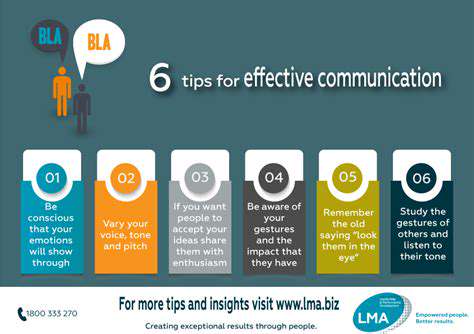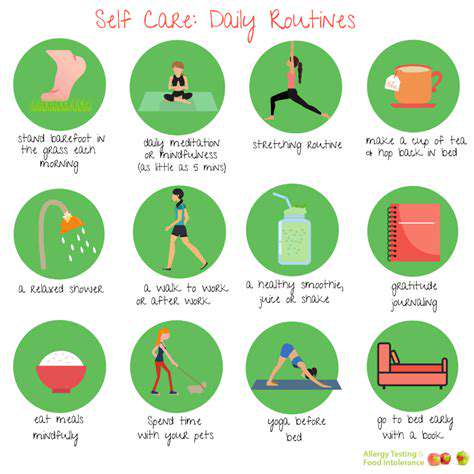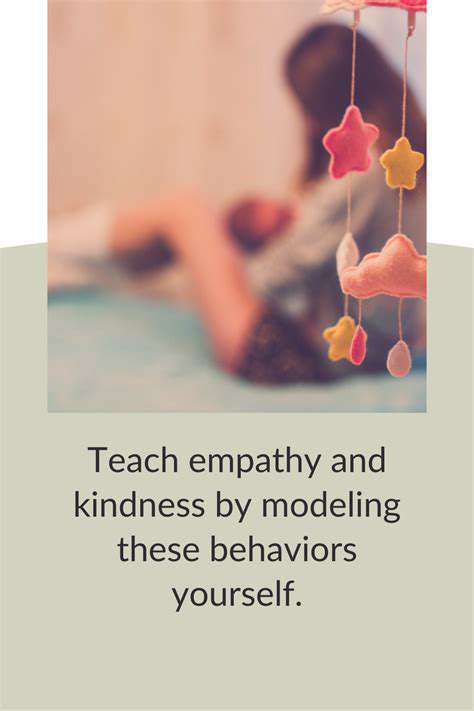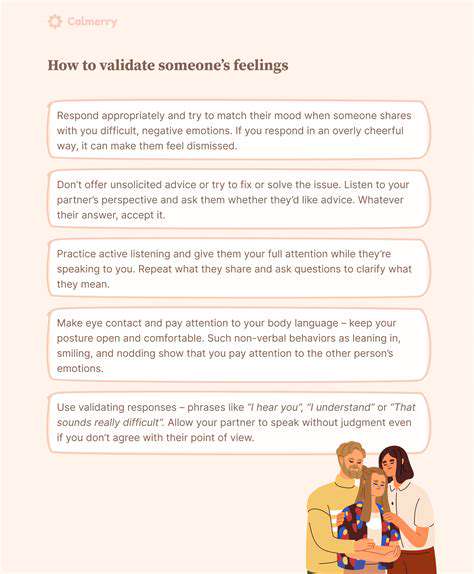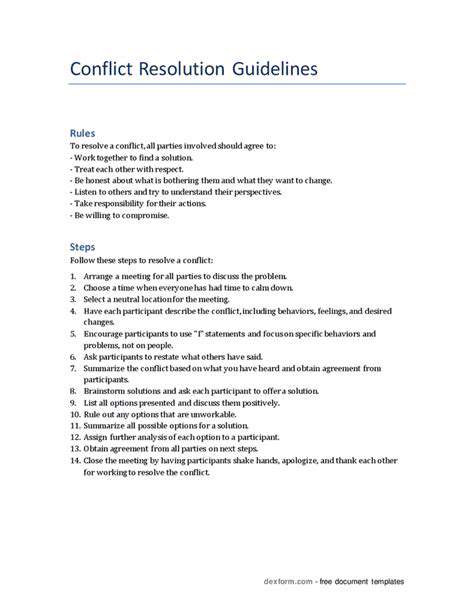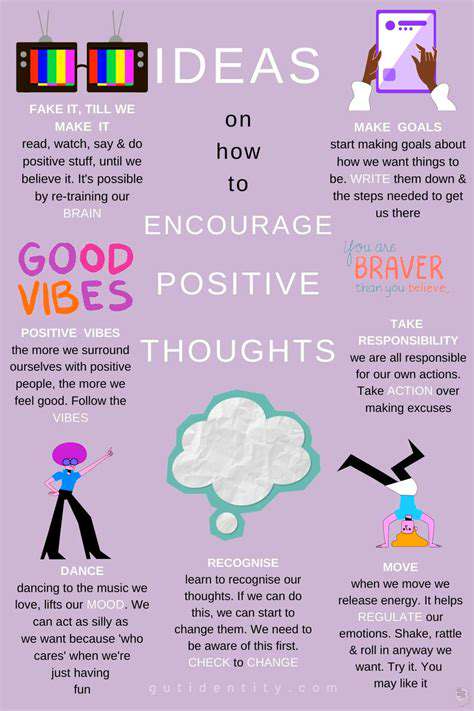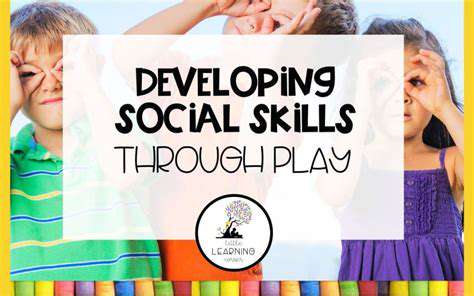Emotional Intelligence for Kids: Nurturing Your Child's Feelings
Understanding Emotional Vocabulary
When helping children develop emotional awareness, identifying and naming feelings forms the essential foundation. Rather than using generic terms like upset, caregivers should guide children toward precise emotional descriptions: You appear frustrated because your block tower fell, or You're feeling proud of finishing your puzzle. This approach builds neural connections between bodily sensations and their corresponding labels, enhancing both self-awareness and social understanding.
Expanding a child's feeling lexicon requires intentionality. Beyond elementary terms like happy or sad, introduce nuanced descriptors - exhilarated, apprehensive, content, embarrassed, envious, or intrigued. Regular use of these terms during daily interactions, storytime, or emotional charades games helps children develop a richer emotional palette for self-expression.
Identifying Emotional Triggers
Emotional intelligence grows when children learn to recognize what sparks specific feelings. A child who becomes agitated during transitions might be reacting to unpredictability rather than the activity itself. Exploring these patterns helps develop coping strategies tailored to individual needs, whether it's using a visual schedule or practicing calming techniques beforehand.
This process emphasizes emotional understanding over suppression. When children comprehend what situations trigger certain responses, they gain tools to either modify their environment or their reaction to it. This proactive skill set serves them throughout life's challenges.
Connecting Emotions to Actions and Consequences
The next developmental phase links feelings to behaviors and outcomes. When a child acts aggressively in anger, calmly discussing how hitting makes others feel establishes cause-and-effect understanding. These conversations should occur when emotions aren't running high, focusing on alternative responses rather than punishment.
This teaching moment builds both empathy and personal responsibility. Children learn that while all feelings are valid, not all expressions are constructive. They begin developing self-regulation skills that lead to more positive social outcomes.
Developing Emotional Regulation Strategies
Understanding the Importance of Emotional Regulation
Emotional regulation skills form the bedrock of psychological health and social success. These abilities allow children to navigate emotional experiences appropriately - from minor irritations to intense distress. Effective regulation involves recognizing emotional signals, understanding their origins, and choosing constructive responses. This skill set reduces impulsive reactions while increasing thoughtful decision-making.
Emotionally intelligent children demonstrate better conflict resolution abilities and form stronger relationships. They understand that emotions provide valuable information rather than being forces that control behavior. This awareness develops through consistent modeling and guidance from caring adults.
Practical Strategies for Teaching Emotional Regulation
Teaching these skills requires patience and a judgment-free approach. Creating emotionally safe environments where children can express feelings without fear of reprimand encourages openness. Caregivers should listen attentively, validate emotional experiences (I see you're feeling...), then guide toward appropriate expressions.
Concrete tools help children practice regulation:- Cool down corners with sensory items- Breathing exercises (smell the flower/blow out the candle)- Emotion thermometers to gauge intensity- Creative outlets like drawing or clay workConsistent routines with clear expectations provide the security children need to manage big feelings.
Implementing Emotional Regulation Activities in Daily Life
Integrating regulation practice into daily routines embeds these skills naturally. Morning check-ins (How's your engine running?) set the tone, while bedtime reflections review emotional moments. Adults should narrate their own regulation processes aloud: I'm feeling frustrated right now, so I'm going to take three deep breaths.
Games that teach emotional awareness (feelings bingo, emotion charades) make learning engaging. Most importantly, when adults model calm responses to stress, children internalize these patterns for lifelong benefit.
Empathy: Stepping into Another's Shoes

Understanding the Spectrum of Emotional Experiences
True empathy involves more than shared feelings - it requires comprehending another's emotional perspective. Validating that different circumstances elicit different responses helps children move beyond egocentric thinking. A child who understands that a classmate's tears might stem from embarrassment rather than pain demonstrates this sophisticated awareness.
Developing this capacity requires setting aside personal judgments to fully appreciate another's reality. Questions like How would I feel in their situation? build this mental flexibility.
Cultivating Active Listening Skills
Empathic connection begins with undivided attention. Teach children to:- Maintain eye contact- Nod to show understanding- Avoid interrupting- Paraphrase what they heard (So you're saying...)
Noticing nonverbal cues - slumped shoulders, clenched fists, or trembling lips - provides additional emotional information. These observation skills develop gradually through practice and adult guidance.
Recognizing and Validating Different Perspectives
Children learn that identical situations can evoke different responses based on personal history or temperament. A lost toy might devastate one child while barely affecting another. Discussing these variations builds tolerance and reduces judgmental attitudes.
Cultural differences in emotional expression provide valuable teaching moments. Some families encourage boisterous celebration while others value quiet appreciation - neither approach is wrong, just different.
Developing Emotional Intelligence
Empathy grows from self-awareness. Children who understand their own emotional patterns better recognize them in others. Regular emotion check-ins throughout the day strengthen this connection between internal states and outward expressions.
Role-playing exercises where children act out different emotional scenarios build both vocabulary and perspective-taking skills. This combination creates the foundation for compassionate relationships throughout life.
Adversity Quotient, commonly abbreviated as AQ, represents a fundamental life competency that evaluates how well someone handles and surmounts difficulties. It's not about dodging tough circumstances but about building the mental toughness to recover from failures and hardships. Grasping the concept of AQ serves as the initial phase in nurturing this skill in young people, enabling them to confront problems with an active and inventive attitude.
Building Resilience: Bouncing Back from Setbacks

Understanding the Concept of Resilience
Resilience represents the human capacity to adapt and grow through life's challenges. Rather than avoiding difficulty, resilient individuals develop coping strategies that allow them to navigate storms and emerge stronger. This dynamic process involves biological, psychological, and social factors interacting uniquely in each person.
Identifying Potential Stressors
Building resilience begins with recognizing personal vulnerability patterns. Some children crumble under time pressure while others struggle with social exclusion. Keeping an emotion journal that records upsetting incidents and reactions can reveal these patterns over time.
Cultivating a Growth Mindset
The belief that abilities develop through effort fundamentally shapes resilience. Children who view challenges as opportunities to grow persist longer and recover quicker from setbacks. Phrases like You haven't mastered this yet reinforce this developmental perspective.
Developing Healthy Coping Mechanisms
Resilient individuals employ multiple coping strategies:- Physical activity to discharge stress- Creative expression through art/music- Mindfulness practices- Problem-solving techniquesHaving a diverse toolbox prevents overreliance on any single method.
Building Strong Support Systems
Social connections act as emotional shock absorbers during difficult times. Children should identify multiple go-to people - family members, teachers, coaches, or friends - who provide different types of support.
Practicing Self-Care
Resilience requires physical and emotional resources. Consistent sleep, nutrition, and downtime create the biological foundation for handling stress. Teaching children to recognize their own limits prevents burnout.
Embracing a Positive Outlook
While acknowledging difficulties, resilient individuals maintain hope. Gratitude practices and celebrating small wins counterbalance life's challenges. This balanced perspective sees setbacks as temporary rather than permanent.
The Importance of Social Skills: Navigating Relationships
Social Skills and Emotional Intelligence
Social competence enables successful navigation of human interactions and reflects emotional intelligence. Key abilities include:- Reading facial expressions and body language- Adjusting communication style to different audiences- Resolving conflicts constructivelyThese skills don't develop automatically - they require intentional teaching and practice opportunities.
Building Strong Relationships Through Social Skills
Healthy relationships rest on several pillars:- Active listening without interruption- Clear I statements (I feel...when...)- Respecting personal boundaries- Offering and accepting apologies sincerely
Empathy acts as the glue that binds these skills together. When children understand how their words and actions affect others, they make more considerate choices.
Social flexibility proves equally important. Children who adjust their behavior appropriately for different contexts (classroom vs. playground) experience greater social success. This adaptability develops through observation, coaching, and practice.
Ultimately, social skills training should emphasize authenticity over performance. Genuine connection matters more than perfect etiquette. When children learn to balance self-expression with social awareness, they build relationships that enrich their lives.


